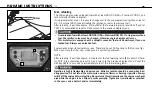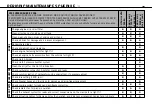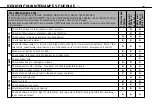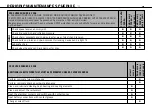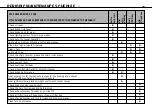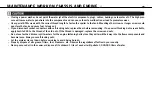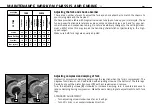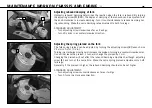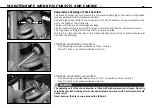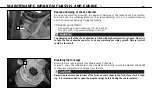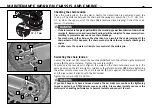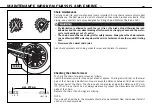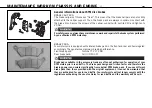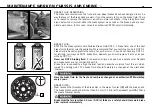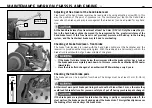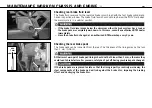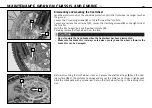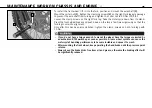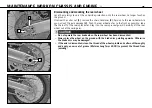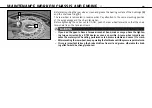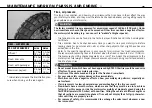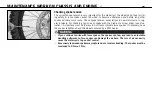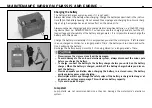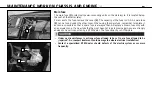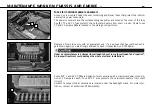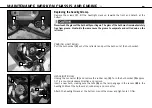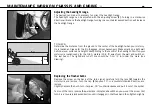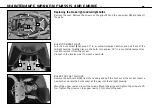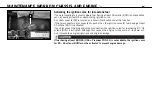
Checking the front brake pads
The brake pads can be inspected from below. The linings must be at least 1 mm (0.04 in)
thick.
At their most worn point brake pad linings should not be thinner than 1 mm, otherwise they
could lead to brake failure. For your own safety don’t put off having your brake pads changed.
If the brake pads are replaced too late when the lining is partly or completely worn off, the
steel parts on the brake pads will grind against the brake disks. This significantly decreases
the braking effect and destroys the brake disks.
Checking of brake fluid level - front brake
The brake fluid reservoir is linked with the hand brake cylinder at the handlebar and the
reservoir is provided with an inspection glass. With the reservoir in a horizontal position, the
brake fluid level should not go below middle of the glass.
– If the brake fluid level drops below the minimum either the brake system has a leak or
the brake pads are completely worn down. In this case, consult an authorized KTM dealer
immediately.
– Have the brake fluid changed at an authorized KTM workshop every 2 years.
MAINTENANCE WORK ON CHASSIS AND ENGINE
»
42
Adjusting of free travel at the hand brake lever
Free travel at the hand brake lever may be readjusted by using adjusting screw
[1]
. In this
way, the position of the point of pressure (i.e., the resistance you feel on the hand brake
lever when the brake pads are pressed against the brake disc) can be adjusted for any hand
size.
At the hand brake lever, free travel must at least be 3 mm (0.12 in). Only then may the pis-
ton in the hand brake cylinder be moved (to be recognized by the greater resistance of the
hand brake lever). If this free travel is not provided, pressure will build up in the braking
system, and the front wheel brake may fail due to overheating.
min. 3 mm
1
min.
1 mm

